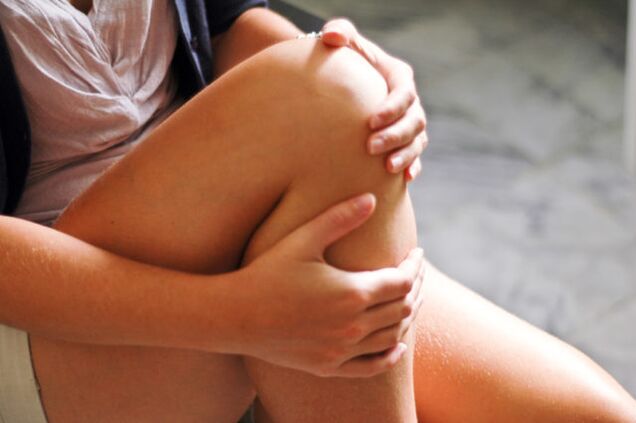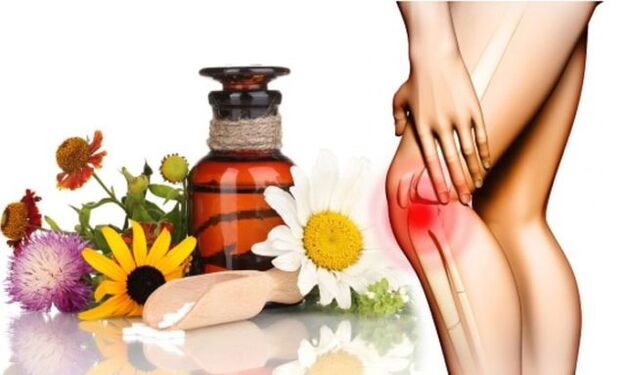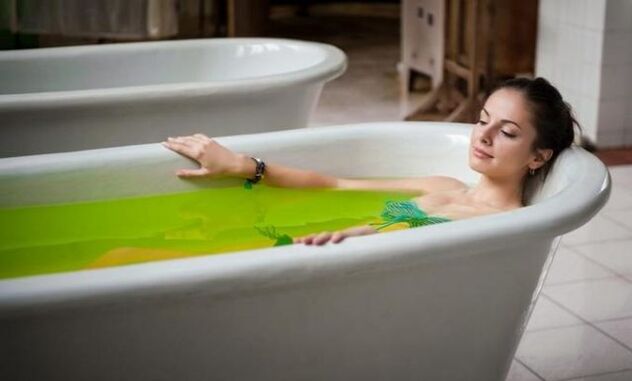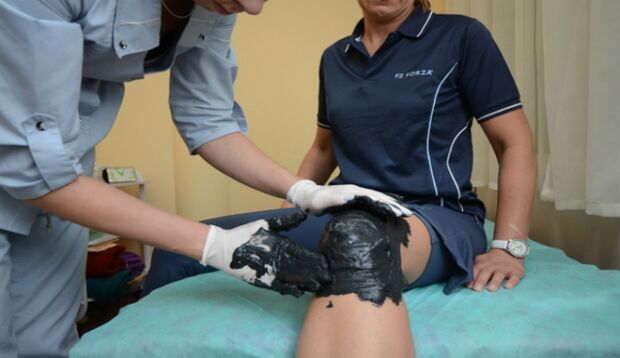Joint diseases with the current development of medicine cannot be completely cured. Science does not stand still, but a remedy that can restore tissue damaged by pathology has not yet been found. Patients have to try all kinds of drugs and methods in search of a cure. Often times, traditional medicine cannot offer an effective way. And then the patient begins to wonder how to treat arthrosis of the knee joint with folk remedies.
Pros and cons of traditional medicine
Traditional medicine for osteoarthritis of the knee joint is used quite often. The disease is difficult to treat, the mobility of the limbs is gradually limited. Even traditional therapies focus solely on pain relief and prevention of complications. Patients and physicians are ambivalent about traditional medicine, but still turn to it when traditional medicine does not produce the desired result.

Treating knee osteoarthritis with home remedies has both advantages and disadvantages. The benefits include:
- availability and low cost of most materials;
- many medicinal plants help to strengthen the immune system;
- few side effects;
- Easy to use.
The raw materials that are used to treat the knee with folk remedies are often included in the preparations of pharmaceutical companies. Therefore, in most cases, alternative medicine is safe if the dosage and the rules of use are followed. It's also worth noting that the recipes that people use to treat knee osteoarthritis are passed on by word of mouth and have stood the test of time. However, care must be taken. Before using any medication, inform your doctor and listen to his recommendations.
Like any other method, popular methods also have their drawbacks:
- the risk of allergic reactions;
- many methods are rejected by traditional medicine, their effectiveness has not been confirmed by research;
- Some of the recipes available on the Internet or published on the pages of newspapers and magazines are incorrect. For example, they may contain incompatible components;
- the same plant material produces a different effect, for example, herbs or fruits of different degrees of maturity, etc.
Doctors for the most part sympathize with the use of traditional medicine recipes for this disease. In addition, they sometimes advise the patient on some methods themselves. But for treatment to be effective, it must be comprehensive. Therefore, when using folk remedies, traditional medicine should not be rejected either.

Effective treatment methods.
Basically, popular folk recipes for osteoarthritis of the knee joint suggest how to prepare drugs that have anti-inflammatory effects. The effect is achieved by accelerating local metabolic processes. This allows you to relieve pain, thereby improving knee mobility and suspending pathological processes.
Traditional medicine in this case is not limited to decoctions and ointments. This, like the traditional one, includes many influencing techniques and methods. Most often, all kinds of ointments, rubs, compresses and applications are used, that is, local agents. It is its effect that is most noticeable. Less frequently, infusions and decoctions are used for oral administration.
It is important to remember that alternative medicine is most effective in the early stages of pathology. Therefore, the treatment of osteoarthritis of the knee joint of the second degree with folk remedies will no longer show as good a result as at the beginning of the disease.
Local compresses
It is difficult to imagine treating knee pain with home remedies without compresses. Patients often prefer this form of treatment. The compress improves blood microcirculation, thus relieving inflammation and swelling. This loosens the joint, eases the movement of the limb. A great advantage of pads is that they can usually be made with products that are always on hand.

Consider popular recipes:
- Oat compress. Pour boiling water over 5 tablespoons of Hercules. There shouldn't be a lot of water. Cook the flakes over low heat for 8-10 minutes. The porridge should be viscous, not thick or runny. Cool the dough and wrap in gauze or natural fabric. Apply to the sore knee for several hours. It can be fixed on the leg with plastic wrap and left overnight.
- Horseradish compress. Grate the root, cover with water and bring to a simmer. Don't let it boil, just let it steam while the water heats up. Then shake off the water, but don't squeeze it out. Wrap horseradish in cotton wool and apply to knee for 2 hours. This recipe helps relieve pain.
- Cabbage compress. You need vegetable juice. Soak a wool shawl in the liquid. Apply to the joint before going to bed. You can use a cabbage leaf smeared with honey. Then fix it with aluminum foil. It is convenient to leave such a compress overnight.
As you can see, all components are completely safe. They can only cause harm to allergy sufferers. Compresses should be applied until the main symptom, pain, is relieved. You can perform the procedure daily, but it is recommended to take breaks after the course for 21-30 days. It is more convenient to apply compresses before going to bed and leave them on overnight.
Tinctures and decoctions.
Tinctures are made with alcohol or water. Plants or their components are used as raw materials. Some infusions and decoctions can be used internally, while others are used to prepare compresses or ointments. Infusions and decoctions are generally prepared from herbs that have anti-inflammatory effects. You can use single or multi-component backgrounds. But don't forget to study their interactions with each other.

For tinctures and decoctions for arthritis, the following raw materials are widely used:
- cranberry leaves;
- chamomile grass and flowers;
- chestnut fruit;
- saber;
- birch buds;
- marigold flowers;
- hop cones;
- wormwood herb.
Topical application of tinctures and decoctions generally has no side effects. When taking them internally, you need to be careful. In addition to allergic reactions, they can also cause disturbances in the digestive tract.
It is worth remembering that it is better to use only a freshly prepared product.
Healing herbal baths
Many patients, constantly searching for an answer to the question of how to relieve pain in osteoarthritis of the knee joint, discover healing baths. The location of the pathology somewhat complicates the procedure. It will be more convenient to do full herbal baths. With the help of them, the patient not only acts on the knee, but also relaxes, which is also important for treatment.
Pine needle baths are helpful (they can be used in conjunction with twigs). The raw materials are soaked in hot water, allowed to stand until the water cools to an acceptable temperature, and removed. This bath can be taken for 20 minutes. The Jerusalem artichoke is also used for the preparation of baths. Some tubers are washed and cut and then soaked in hot water. Add a tablespoon of turpentine and bathe when the water cools down a bit.
For the effect to be noticeable, the procedure should be carried out for 10-12 days in a row.

Mud therapy
Peloid therapy is often prescribed by doctors for osteoarthritis patients. The patient is sent to a sanatorium where clay with the appropriate properties is used. Saki and Essentuki are popular in our country. Such therapy helps accelerate recovery, normalize blood circulation and local metabolism.
In addition to the effect on the joint, the therapeutic mud removes toxins and toxins from the body, which also has a positive effect on the treatment. Usually after rehabilitation in a sanatorium or resort, the patient notices improvement and is in a good mood, facilitating further therapy.
Applications with medicinal plants
Applications with various additives are carried out on patients during physiotherapy in a hospital setting. But at home, you can do these procedures with herbs and paraffin wax. There are also applications of clay or therapeutic clay, which are enriched with decoctions of plants.
The difference between this method and conventional compresses is that the lotion must have a chemical, thermal and mechanical effect on the affected area. This is achieved by applying a vegetable porridge on the knee, which has an irritating effect. You can preheat it to add thermal influence. The mechanical effect can be obtained by applying tape to the knee with glued watermelon, sunflower, melon or buckwheat seeds.

Rub with camphor and fats.
In folk medicine, the treatment of the joints with camphor oil is often practiced. The substance is used both in pure form and in a mixture with other components. This is believed to help partially restore lubrication to the joints, but this is a highly controversial statement that has yet to be confirmed by mainstream medicine. One thing is for sure: home remedies with camphor effectively relieve pain. For the treatment of knee osteoarthritis, 10% oil is needed, but alcohol is also suitable.
Patients note a positive effect after rubbing with fats. Badger is used more often, pork or beef less often. The latter often serve as a base for herbal ointments. Badger fat is also used in its pure form.
Fats and camphor in rubbing form dilate blood vessels, thus providing blood flow to the knee and improving trophism.
Effective wrap with mummy and honey.
There is another effective recipe that contains the answer to the question of how to heal the knee joint. Home remedies often involve the use of mummy, a resinous substance of natural origin. When mixed with bee products, it has a strong analgesic effect. To prepare the drug, it is necessary to combine 100 g of liquid honey and 0. 5 g of mummy.
The wraps are made overnight and left overnight, and the remains are washed in the morning. The procedure is repeated for 10 days, after which they take a break for 2-3 days and, if they wish, continue the course.
Hirudotherapy
This method does not quite fit the definition of "home remedies", because it is only possible in a clinic, but it is still considered unconventional. As the observations of specialists show, hirudotherapy is effective for the treatment of osteoarthritis of the knee joint. The use of medicinal leeches is only possible as part of a complex therapy.
The effect is due to the enzymes that are injected into the patient's blood during the bite. Thanks to these substances, blood circulation improves and pain is relieved.
When to give up alternative treatment
Treating the knee with folk remedies is not always possible and useful. It should be understood that with 2 and 3 degrees of joint damage, the recommendations of doctors should first be listened to. In this situation, traditional medicine will not help, but will aggravate the problem. Unconventional treatment needs to be stopped immediately if new symptoms develop, pain intensifies, or an allergic reaction occurs. You should also visit a doctor, where you can inquire about the advisability of using folk remedies.
Today, doctors are looking for a cure that helps cure joint diseases, without denying natural medicines. As with any remedy, care must be taken not to ignore conventional medicine.



































